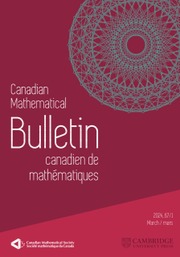No CrossRef data available.
Article contents
Relative cell complexes in closure spaces
Published online by Cambridge University Press: 20 June 2025
Abstract
We give necessary and sufficient conditions for certain pushouts of topological spaces in the category of Čech’s closure spaces to agree with their pushout in the category of topological spaces. We prove that in these two categories, the constructions of cell complexes by a finite sequence of closed cell attachments, which attach arbitrarily many cells at a time, agree. Likewise, the constructions of CW complexes relative to a compactly generated weak Hausdorff space that attach only finitely many cells, also agree. On the other hand, we give examples showing that the constructions of finite-dimensional CW complexes, CW complexes of finite type, and relative CW complexes that attach only finitely many cells, need not agree.
Information
- Type
- Article
- Information
- Copyright
- © The Author(s), 2025. Published by Cambridge University Press on behalf of Canadian Mathematical Society
Footnotes
This research was partially supported by the National Science Foundation (NSF) grant DMS-2324353 and by the Southeast Center for Mathematics and Biology, an NSF-Simons Research Center for Mathematics of Complex Biological Systems, under NSF Grant No. DMS-1764406 and Simons Foundation Grant No. 594594.


